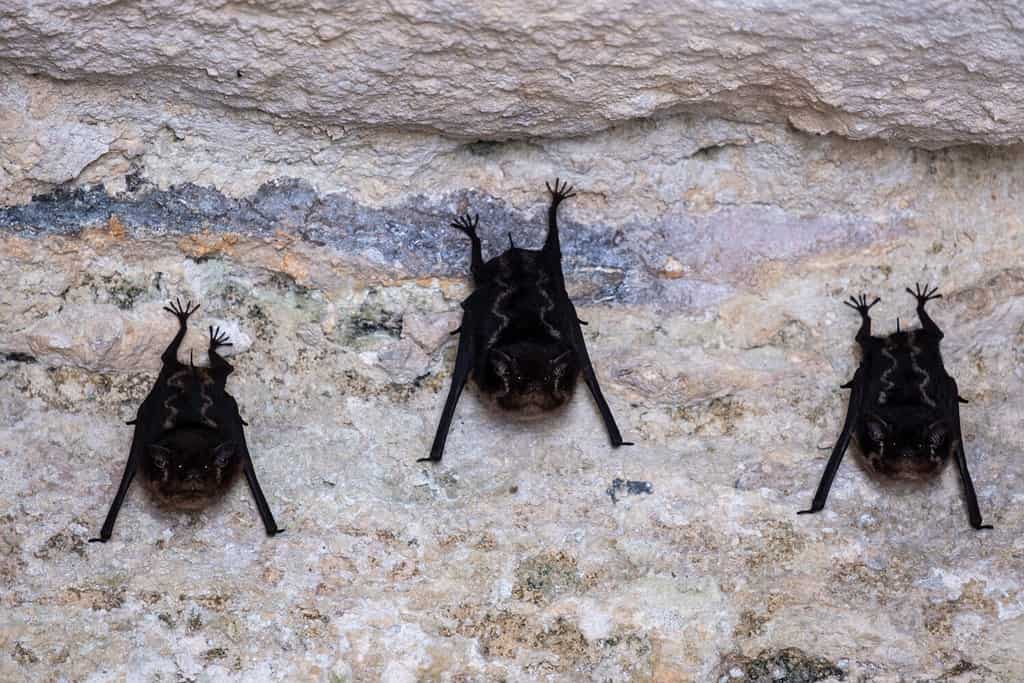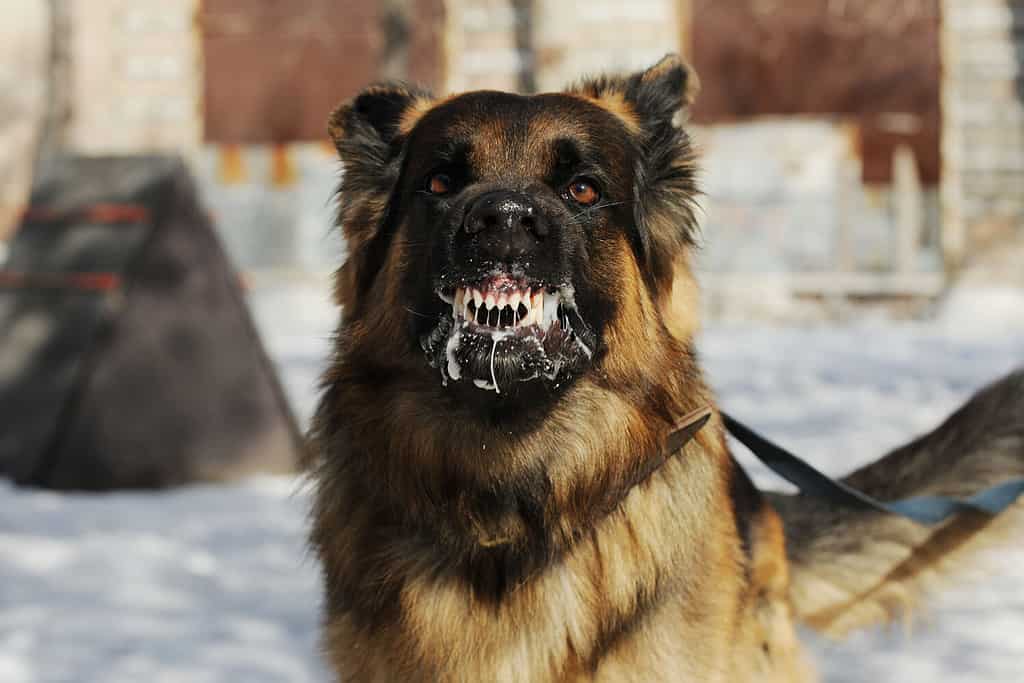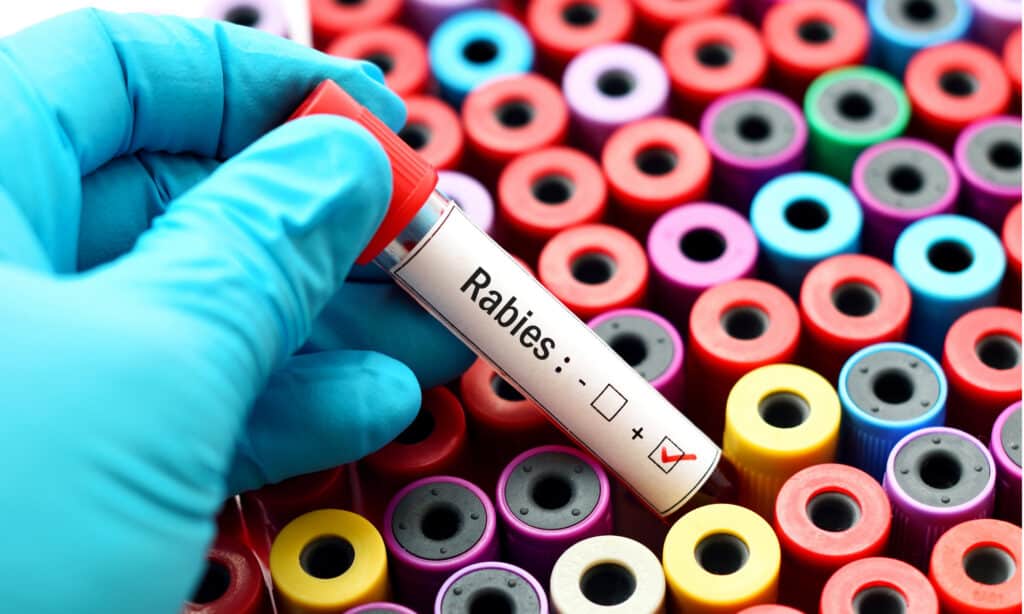You might think of rabies as a virus that won’t affect you or your pets, but it is a fatal illness that can cause aggression in animals and is often caught too late.
The rabies virus affects the nervous system by attacking the brain. The brain begins to deteriorate, and those infected can become aggressive. Animals and humans infected with rabies may also develop anxiety, frenzied behavior, and fear of water and light. Once symptoms of rabies appear in animals, it is 100% fatal.
Learn more about rabies, its symptoms, and how to protect yourself and your beloved pets.
What Are Rabies?
Rabies is a viral disease caused by the RABV virus. It is a serious illness that is fatal to humans and animals when they aren’t vaccinated quickly after exposure. In the United States, rabies is most commonly spread by bats, coyotes, raccoons, and foxes. Africa and Asia are predominantly infected by rabies through dog bites.
Rabies is preventable by vaccines, which should be administered as soon as possible after exposure. However, once symptoms start, it is 100% fatal. In most cases, the virus is transmitted to humans from domesticated dogs through their saliva. Contact can be from bites, contact with saliva on open wounds, and rarely scratches, but it can occur.
Every continent on earth reports rabies cases, with marginalized populations most affected. Vaccines and immunoglobulins are available to treat rabies in humans but aren’t always accessible.

Bats are responsible for most human rabies cases in the United States.
©LP Production/Shutterstock.com
Why Does Rabies Cause Aggression in Animals?
The virus attacks the body’s cells. As they tear and rupture, it infects more cells and spreads throughout the body. Once an animal is exposed to the rabies virus, it can take 10 days to 3 months for symptoms to appear. Once symptoms start, they can die within 7 days. However, some can survive up to 10 days.
The first symptoms of the rabies virus are similar to the flu. The animal will start to feel feverish and fatigue. When these symptoms occur, the virus has reached and caused damage to the spinal cord and brain. The brain will experience encephalitis, which is the inflammation of the brain. As a result of encephalitis, the animal will experience headaches, hallucinations, vomiting, confusion, and aggression.
There are several stages that an animal with rabies will experience when the virus reaches the central nervous system:
- Phase one: Change in temperament. A quiet or shy animal will become agitated and active for 2-3 days.
- Phase two: The animal becomes hyperactive, aggressive, and erratic. They are hypersensitive to light, and seizures can occur.
- Phase three: Facial and limb paralysis until the animal dies.

Dogs in the end stages of rabies often have seizures.
©kamontad123/iStock via Getty Images
What Animals Get Rabies?
Rabies can infect every mammal. In North America, bats, foxes, skunks, raccoons, and coyotes are the most common animals that get rabies.
Various farm animals and pets can spread the rabies virus to humans. These include:
- Cows
- Dogs
- Cats
- Ferrets
- Horses
- Goats
According to CDC reports in 2018, 92.7% of reported rabies cases are from bats, followed by raccoons at 33%. People can get rabies from a simple bite or saliva contacting the infected animal’s saliva on an open wound. If you come in contact with the following wild animals, it is essential to see a healthcare professional and begin the vaccination process:
- Coyotes
- Bats
- Raccoons
- Skunks
- Monkeys
- Foxes
- Opossums
Since 1995, the USDA has been taking an active stand against rabies by providing oral rabies vaccinations to wildlife. Their goal is to stop the spread of rabies in carrier species.
How Can You Tell if an Animal Is Infected with Rabies?
Unfortunately, there is no way to tell if an animal is infected with rabies unless a veterinarian performs testing or symptoms start to show. Rabies can cause aggression in animals, but there are various other symptoms. Some can be timid. Leaving wild animals alone is important because you won’t know which ones are ill.

Rabies infects the central nervous system and can cause aggression in animals.
©Victoria Antonova/Shutterstock.com
Here are some symptoms animals with rabies can experience:
- Aggression
- Problems swallowing
- Excessive drooling
- Hallucinations
- Paralysis
- Shyness
- Fever
- Vomiting
- General sickness
How Can You Prevent Your Animals From Getting Rabies?
Vaccines are the only way you can protect your pets from getting rabies. Each state has a different vaccination schedule, so it’s essential to speak to your veterinarian to ensure your beloved pet is up to date.
Another way you can protect your animals is by keeping them away from wild animals, such as raccoons. Everyone in your household should be wary of wild animals and know the signs and symptoms of animals with rabies to protect yourself and your pets better.

Rabies vaccine is the best defense against the disease.
©iStock.com/arun011
Final Thoughts
Rabies is a virus that can infect all mammals, including people. This fatal illness attacks the central nervous system, which can cause aggression in animals. If you are bitten by a wild animal that could have rabies, you must seek medical attention immediately.
Thank you for reading! Have some feedback for us? Contact the AZ Animals editorial team.








